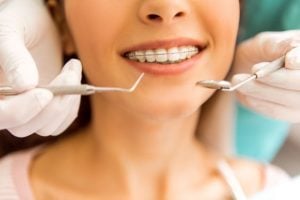 For years, whenever you needed a dental crown (cap), your dentist had to make molds of your teeth which required taking an impression of your teeth. A tray filled with a goopy, putty-like material was used so that a three-dimensional model of the prepared tooth could be created. Using this mold, along with a dental lab, we could custom-craft the new crown.
For years, whenever you needed a dental crown (cap), your dentist had to make molds of your teeth which required taking an impression of your teeth. A tray filled with a goopy, putty-like material was used so that a three-dimensional model of the prepared tooth could be created. Using this mold, along with a dental lab, we could custom-craft the new crown.
Here’s how it works
However, as we journey further into the technology-driven 21st century, this former methodology is being replaced with virtual models — made using small, handheld “wands” that employ a digital camera.
This remarkable tool uses blue wavelength light so that we can precisely capture the unique nooks and crannies of your tooth’s surface to make a highly accurate 3D digital model. It enables us to instantaneously examine a tooth and your bite. Another advantage of this process is that we can immediately identify any additional prep work required for new crowns, veneers and fillings; implement those changes; Itero.and rescan the tooth to create a new series of images and 3D model.
How this technology benefits you
- Finally, you can say goodbye to the goop, gagging, discomfort, and anxiety you’ve experienced in the past with traditional dental impression materials!
- It gives us the immediate ability to assess whether or not we’ve adequately prepared your tooth for restoration.
- This technology is ideal for fabricating restorations such as new crowns, veneers and fillings for teeth — often possible in one office visit.
- It takes less time than traditional dental impressions.